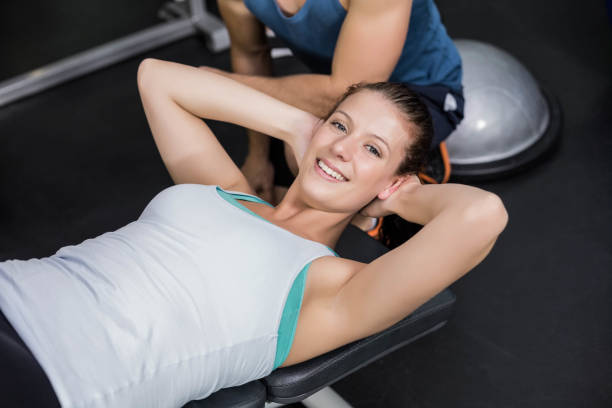THE BENEFITS AND DRAWBACKS OF POPULAR TRAINING STYLES AT THE GYM

People can choose between a variety of training styles when they visit the gym, depending on their fitness level, goals, and preferences. The most popular styles of training are:
- Strength Training
- Cardiovascular Training
- High-Intensity Training Intervals (HIIT)
- Bodyweight Exercise
- CrossFit
- Yoga
- Pilates
- Functional Training
All of these styles offer their advantages and disadvantages, but it’s important to pick a style you can stick with long-term to get the results you want.
STRENGTH TRAINING
The goal of this style is to increase muscle mass and strength by lifting weights. It usually involves exercises such as bench presses, overhead presses, and squats. All of these exercises can be done with weights, ma, chines, or a combination.
Benefits: Strengthening the muscles and increasing strength and muscle mass can reduce injury risk and improve body composition. Strength training can help boost metabolism, which makes it easier to maintain a healthy body weight.
Drawbacks: Because of the complexity and intensity of weight lifting, beginners may have difficulty performing the exercises correctly. This can result in injury.
CARDIOVASCULAR TRAINING
Cardiovascular training is a type of exercise that improves heart and lung health. Running, biking, and swimming are some exercises that can help elevate your heart rate.
Benefits: Cardiovascular exercise helps strengthen your heart and reduces the risk of strokes, heart disease, and other cardiovascular conditions.
Disadvantage: This style is not ideal for those who want to build muscle or gain strength.
HIGH INTENSE INTERVAL TRAINING
HIIT is a short burst of high-intensity exercise followed by a rest period or lower-intensity exercises.
Benefits: Due to the short bursts and high-intensity exercises, HIIT workouts tend to be shorter than traditional cardio workouts. This makes them a more efficient use of time for people with busy schedules.
Disadvantage: The type of training designed does not suit all fitness goals, as it is primarily focused on weight loss and cardiovascular health rather than muscle strength or mass.
BODYWEIGHT TRAINING
Bodyweight training is a way to build muscle and strength by using your body weight instead of weights. Push-ups are among the exercises you can perform.
Benefits: Bodyweight exercises are easy to do anywhere. This is great for those who don’t own a gym or have limited space. Beginners can also benefit from this method by becoming familiar with the movements and gaining strength before they move onto weights.
Drawbacks: Bodyweight exercises are not able to target all muscle groups, such as the back and chest. Therefore, there is a limit to how much these muscles can work.
CROSSFIT
CrossFit is a combination of weightlifting and cardio training. These exercises are performed with high intensity and timed.
Benefits: CrossFit, which incorporates different training styles, can improve overall fitness. It increases strength and endurance while providing a community-like atmosphere among participants.
Disadvantages: CrossFit is usually performed in groups and requires a coach. It can be expensive because of the extra costs of specialized equipment and coaching.
Yoga
Yoga is a combination of posing exercises and breathing exercises that improve flexibility, balance, and strength. Yoga can be done at different intensities, making it a suitable exercise for all fitness levels.
Benefits: Yoga is known to promote relaxation and can reduce stress and anxiety. It does this by relaxing the mind, slowing the breath, and relieving tension.
Disadvantage: In order to avoid injury, it is important to have proper alignment and form. This may require the assistance of a Yoga teacher, who may not be easy to find.
PILATES
Pilates is a low-impact method of training that focuses on improving core strength, flexibility, and posture.
Benefit: Low-impact exercises are better for those with joint pain and injuries.
Disadvantage: Like Yoga, Pilates involves specific body positions and movements that must be taught by an instructor trained in Pilates to prevent injury. This may lead to a more expensive experience compared to other training methods.
FUNCTIONAL TRAINING
Functional training improves your ability to perform daily movements and activities, particularly in terms of overall strength, flexibility, and sports performance.
Benefits: Functional training can improve mobility and movement patterns, which will translate to improved performance during sports or other physical activities.



Leave a Reply